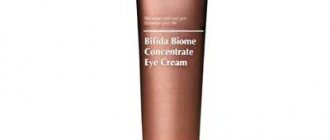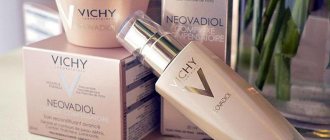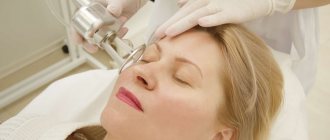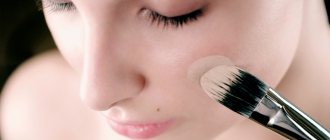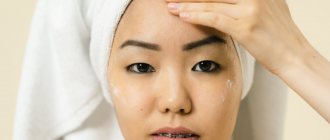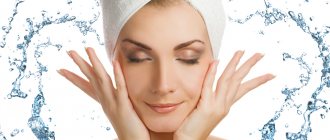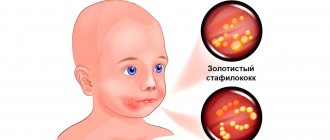Anti-aging skin care aims to eliminate or soften the signs of aging. The skin is the first to show age, but when this happens depends on genetics and lifestyle. Thus, the type of aging and skin type are genetically determined in us. And in your lifestyle, nutrition, sleep, bad habits and stress are important.
In this article we will talk about anti-aging facial care. When is it appropriate to start it, what is the difference between anti-aging care at different ages, how to choose the appropriate cosmetics. Remember, half the battle is in your hands, don't miss the chance!
Anti-aging care: when it's time
Most cosmetologists agree that before the age of 28, the use of anti-aging special products is not justified. They will only prevent the skin from working on its own. Yes, the first mechanisms of aging really start at 25+. But this doesn't mean that at 25 it's time to dive into hardcore anti-aging care.
What then to do if the quality of the skin is not satisfactory until the age of 27-28? At this age, early wrinkles may well be a concern. Prolonged stress or an unhealthy lifestyle especially contribute to this. Young people notice that their skin no longer recovers as quickly and efficiently as before.
Sometimes there is simply no way to get rid of stress. For example, a person has a harmful job: night shifts, flights, etc. Or the same situation of motherhood, when you have to sacrifice your comfort. In these cases, it is worth pushing for care. Not anti-aging, but regular everyday. Need to:
- Choose day and night creams to suit your skin type;
- Purchase additional care in the form of serum;
- Regularly cleanse your facial skin with a non-irritating product;
- Don’t forget about toning with a high-quality tonic;
- Once a week, make a mask to deeply nourish and restore your facial skin.
So, we agree on the age of 28-30 as ideal for early anti-aging care. What does it consist of? Now you'll find out.
Features of anti-aging care from 30 to 40
The first subgroup is 30-35 years old. At this age there are already wrinkles, but in general the changes are quite uncritical. The skin is still quite elastic, the contour of the face is clear. And if a person takes care of himself, maintains a healthy lifestyle and has good genetics, age-related changes can be minimal.
They still don't sell you wine without a passport? Great, the main mission of 30+ is to preserve this youth for as long as possible. You can connect the first special equipment, but light and delicate. You don't need shock dosages for mature skin yet.
Here are the main rules for anti-aging skin care for people aged 30+.
- Complete daily facial care, morning and evening. If at 20 you had one cream and foam for washing, then at 30+ you should have a full set. The skin won't forgive you anymore!
- Use day cream with SPF. Sun protection is also important for young people, but after 30, when the aging process noticeably accelerates, it is simply mandatory;
- At 30+, it is important to really thoroughly cleanse your skin of dirt and makeup. Under no circumstances should you go to bed with your face uncleaned, especially with makeup. Just like painting dirty skin. You are facing not just pimples like you did at 20, but also new wrinkles;
- Add eye cream to your arsenal if you haven’t used it before. The area around the eyes has the thinnest skin, which is highly susceptible to aging;
- Include retinol (a form of vitamin A), but don't go overboard with the dosage. Retinol is the first anti-aging component that can be introduced into everyday use. It is known for its smoothing properties. At 30, 1% retinol is enough; you need to apply it at night, 3-4 times a week. In subsequent years, you can slightly increase the dosage;
- Be sure to exfoliate your skin. And not with a scrub, but preferably with peeling. Peels are made with acids, and they provide deeper cleansing. The main thing is to choose the right product. If you are 30+ you need to do peeling 2 times a week (soft!).
With the onset of 35 years of age, care should intensify. Age-related changes become more pronounced, and the contour of the face begins to slowly float. The skin is no longer as elastic as in youth, and pronounced creases form in some places. And the skin becomes thinner.
Nevertheless, the hormonal background is usually still in order, which means that a lot still depends on care and lifestyle. And what is added in care:
- You can start attending various auxiliary procedures for the skin: mesotherapy, biorevitalization. It is still not recommended to resort to harsh measures such as laser resurfacing;
- Face masks need to be done more often, even on a daily basis (there are such products). For example, night leave-in;
- Choose products with a natural composition, with a minimum of ambiguous and harmful ingredients. Your task is to reduce stress on the skin as much as possible;
- Focus on intense hydration. Add active serum, buy creams with a high concentration of hyaluronic acid;
- It would be nice to involve a professional facial massage: it can significantly slow down the aging process. Sculptural and buccal massage is especially good.
How to make cream at home
Homemade creams cannot greatly influence the processes occurring in aging skin. They help maintain moisture levels, even out complexion and nourish the skin with the necessary substances.
Therefore, they are used not to eliminate already formed wrinkles and sagging skin, but to prevent their appearance. All homemade creams are prepared on a very oily basis, so they are suitable only for normal and dry skin types.
Cream with lifting effect
Gelatin powder (1/2 tsp), glycerin (50 ml), honey (1.5 tbsp), citric acid (1 g) are placed in an enamel container and filled with boiled water.
The container is placed in a water bath and kept until all components are dissolved, stirring regularly.
Active wrinkle smoothing
Homemade heavy cream (100 g), honey (1 tbsp), cognac (2 tsp), egg yolk (1 pc) and lemon juice (1 tsp) are mixed in a glass container.
Softening and increasing skin elasticity
Cosmetic petroleum jelly (1 tsp), honey (1 tbsp), castor oil (1 tbsp) and 2 drops of iodine are placed in an enamel bowl. Place in a water bath until it reaches a homogeneous consistency.
Night nourishing cream
Components:
- almond oil 30 ml;
- beeswax 20 g;
- lemon juice 1 tbsp. l.;
- dry calendula inflorescences 1 tbsp. l.;
- lemon essential oil 20 drops;
- calendula oil 20 ml.
Calendula flowers are poured with hot boiling water (100 ml), covered with a lid, left for 30 minutes, filtered and cooled. Melt the wax in a water bath, add all the components and 50 ml of calendula infusion. Keep on fire until a homogeneous consistency is obtained.
Deep nutrition, restoration and rejuvenation of the skin
Components:
- vitamins A and E in capsules, 1 pc.;
- beeswax ½ tsp;
- cocoa butter ½ tsp;
- almond oil 1 tsp;
- aloe juice ½ tsp.
Place beeswax and cocoa butter in an enamel bowl, place in a water bath and dissolve until smooth. Remove the mixture from the heat and, whisking with a mixer, gradually pour in almond oil and aloe juice. After the mass has cooled, add vitamins and mix.
Homemade creams are used in the same way as store-bought products. It is advisable to prepare them in small portions and store them in the refrigerator for no more than 7 days.
The use of cream is only superficial care and nutrition of the skin. The intake of nutrients along with food is of great importance, so it is worth reviewing your diet. Another significant reason for the rapid aging of the skin and the formation of early wrinkles is smoking. Cigarettes and healthy skin are incompatible.
Features of anti-aging care from 40 to 50 years
At the age of 40-45, the normal course of all processes in skin cells noticeably slows down. However, even at this age you can still look quite youthful if you take care of yourself (without salon hardcore!) and maintain a healthy lifestyle.
- Collagen reserves are decreasing;
- There are more and more wrinkles;
- The oval of the face undergoes gradual deformation;
- The skin becomes noticeably drier than before;
- The level of the female hormone estrogen decreases, which also does not benefit the skin.
Therefore, the rules of anti-aging care will have to change a little.
- It's time to choose really high-quality day and night creams. The daytime one should provide good hydration, the nighttime one should have a rich nutritional composition. Intense hydration is still your priority;
- Actively use cosmetics labeled anti-age. Its composition is selected specifically for the needs of the skin at your age; ordinary cosmetics may no longer be so effective;
- Switch to more concentrated peeling products, light ones are no longer enough. But there’s no need to be harsh: stay at medium concentration;
- It is better to give preference to expensive pharmacy cosmetics. The quality of care products for 40+ is of great importance.
As for skin care after 45 years, new nuances appear here. Hormonal surges become pronounced. Jowls and bags under the eyes are already forming, and the skin is drying out. What to pay attention to in addition to the above:
- Actively use products with ceramides and hyaluronic acid to retain water in cells;
- Lean on peptides;
- Enrich your products with vitamins A and E to nourish the skin and stop oxidation;
- Introduce cosmetics with a whitening effect, since active skin pigmentation begins closer to 50;
- Don't forget about the skin of your neck and décolleté. The same products are suitable for her as for the face. But it is better to purchase separate ones;
- Focus on stimulating your facial muscles. Go to the salon for appropriate procedures: myostimulation, massages. This needs to be done in courses, but on a regular basis. Better - all the time.
Types of aging
Aging in people manifests itself not only at different ages, but also in different patterns. There are 5 types of aging (morphotypes). Determining your type will tell you how to properly care for your skin to prolong its youth.
Tired
This morphotype is characterized by a decrease in skin turgor, the appearance of nasolacrimal grooves and nasolabial folds. The corners of the eyes and lips droop. Wrinkles appear more slowly than with some other types. The skin is normal or combination, the body type is usually thin, there is a small amount of subcutaneous fat. This type of aging is considered the most natural, and the wrinkles that appear look quite organic.
Which care to choose:
look for cosmetics that contain antioxidants, vitamin C, E, and moisturizing oils.
What procedures to try:
Gentle peelings, massages, biorevitalization, mesotherapy, modeling with fillers, and correction of facial contours will be useful.
Deformation
One of the most common types of aging in our country. Wrinkles do not appear for a long time, the skin looks fresh, and a healthy glow is maintained. However, the peculiarity of this type is that the face gradually begins to “swim”, the oval seems to be blurred. This type of aging is characteristic mainly of people with oily skin. Often accompanied by a tendency to be overweight.
Which care to choose:
Pay attention to creams and other products that stimulate collagen production, accelerate skin renewal and contain retinol.
What procedures to try:
you can straighten the oval of the face, RF lifting and massage to strengthen muscles.
Muscular
The most youthful of all types of aging: the face remains fresh for quite a long time, and guessing the age can be very problematic. However, at a certain point, changes occur rapidly, almost overnight. This type is often found among representatives of Asian peoples. It is typical for people with well-developed facial muscles and virtually no fat. The contour does not change, the skin remains elastic, and wrinkles are very rare, but pigmentation is often present, and nasolabial folds are clearly visible.
Which care to choose:
creams that fight skin pigmentation, exfoliating products, as well as those containing retinol, vitamin C, high-quality hydration is important.
What procedures to try:
phototherapy, microcurrent therapy, massage and mesotherapy.
finely wrinkled
This type is characterized by the early appearance of wrinkles. They are not deep, but there are quite a lot of them on the forehead and/or in the corners of the eyes (the so-called “crow’s feet”). Often they are accompanied by pigmentation and decreased skin turgor, but swelling does not threaten people with this type of aging. This morphotype is typical for those with dry skin, normal or thin build, and a low percentage of subcutaneous fat.
Which care to choose:
creams aimed at moisturizing the skin, preserving moisture and restoring the lipid barrier, as well as containing oils, antioxidants and vitamin C.
What procedures to try:
phototherapy, peelings, biorevitalization, botulinum therapy, mesotherapy and contour plastic surgery.
Mixed
It is likely that you will find that you have characteristics characteristic of different morphotypes. This is absolutely normal and there is no mistake here - you just have a mixed type of aging. In this case, it is necessary to correctly combine the rules of care and salon procedures aimed at combating various age-related changes. In addition, there are a number of universal principles that are relevant for any morphotype.
Features of anti-aging care after 50 years
After 50, you can still look dignified and youthful if you devote enough time to proper self-care. And if a person has approached the issue irresponsibly all his life, then even good genetics is unlikely to save him.
After 50 there are the following features:
- The reserves of collagen and elastin are quite depleted;
- The complexion becomes dull, the skin may peel;
- The skin sags significantly;
- Lots of pigment spots.
And what to do at this age, how to change your regular care:
- Try professional salon peeling; home cleansing is no longer as effective;
- Switch to specialized anti-aging cosmetics, forgetting about all the folk recipes - this is guaranteed not to work at this age;
- You can try laser technology for skin rejuvenation. The main thing is to seriously choose a salon and a specialist.
In general, after 50, the salon should be your best friend, because home care is not nearly as effective for mature skin. Don't stop relying on professional facial massage.
Lazy skin
What happens if you get carried away and start using anti-aging cosmetics ahead of time? There is an opinion that in this case the skin becomes “lazy”, ceases to maintain the normal rate of metabolism and, as a result, ages even faster. In fact, this is not true, it’s just that even the best anti-aging cosmetics will not provide as much benefit as they could if their use were justified. We draw conclusions: we begin to use “adult” cosmetics when the first real signs of fading appear. To do this, we carefully monitor and monitor the condition of the skin, because starting the fight against aging in time will be more effective.
How to choose the best anti-aging care
After reading all the recommendations, one question remains: how to choose the most optimal anti-aging care? This should be done primarily according to skin type and age category. Under no circumstances should you take a higher category, that is, a cream for 35 years old at 30. This is fraught with deterioration of the skin condition.
Next, pay attention to the composition. The following ingredients should come first in anti-aging cosmetics:
- Vitamins A (retinol), E (tocopherol), C;
- Vitamin B3;
- Collagen;
- Hyaluronic acid;
- Peptides;
- Coenzyme Q10;
- Fruit acids;
- Snail slime.
Also, anti-aging day creams should have a sunscreen. Or purchase protective cream separately, and do not forget to reapply during the day if the weather is sunny. And in winter too!
The older you get, the more intense and active formulas you need.
The thickest and most nourishing creams, for example, are best purchased after 45-50 years. Serums are also heavy artillery, and at a younger age they are best used in courses rather than continuously. Buy Christian Breton anti-wrinkle eye cream for 1699 rubles with delivery throughout Russia —->
Buying your first cream labeled anti-age
Despite the increased interest in the problem, dermatologists and cosmetologists still do not have an answer to the question of when the skin begins to age. Some experts insist that the aging process of the dermis begins immediately after birth, others believe - during puberty. To determine at what age to use anti-aging cosmetics, you need to take into account heredity and lifestyle characteristics. A properly selected anti-aging cream is the best remedy for combating age-related changes in the skin; thanks to its special composition, it can restore lost elasticity and firmness to the dermis.
Dermatologists recommend choosing so-called “muscle relaxants” as the first anti-aging cosmetics. They only affect facial wrinkles, which appear much earlier than age wrinkles. Such drugs contain ingredients that prevent active contractions of the dermis and its deformation. You shouldn’t count on the anti-aging cream to smooth out all the wrinkles on your face, but at least they will stop getting deeper.
